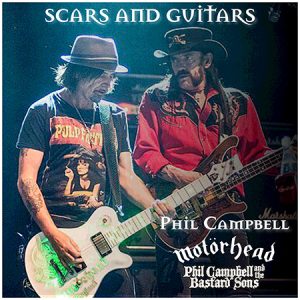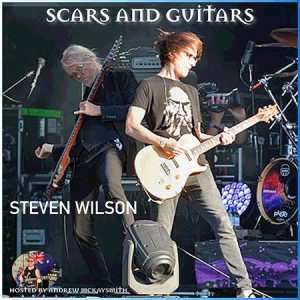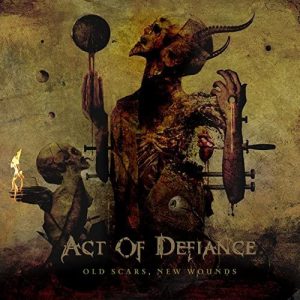Introduction.
1982 was a time when metal and hard rock were still sorting out how to make sense of the end of an era for one of its most essential names in Black Sabbath, and the end of the road for another in Led Zeppelin. Deep Purple hadn’t released a studio album in over seven years and the original members were plying their trade in other outfits such as Whitesnake. There was also a sense that while NWoBHM and German groups such as Scorpions and Accept were the metal for the time, except for the soon to be colossal Bruce Dickinson fronted Iron Maiden, and the already commercially successful Judas Priest, there wasn’t much happening either side of the Atlantic concerning significant mainstream cultural representation.
Metallica. The name alone stands tall as the edifying monolith to the change that metal would experience after the release of the debut album Kill ‘Em All in 1983. The winds of change became a hurricane on any of the Dave Mustaine-and-Heineken powered demos circulating in the underground scene in 1982. While it is undoubtedly true that many thrash bands of the era were active at the same time (Anthrax, Exodus), none offered the accessibility of Metallica, and indeed, none would achieve anywhere near the same coverage across so many markets in the following years. In the simplest possible terms, Metallica changed the game.
In a review that I authored for The Metal Forge web publication for the album Hardwired… to Self-Destruct (’16), I described the two albums following Kill ‘Em All as “…two of the most continuously influential albums in recorded music history”. Ride the Lightning (’84), and Master of Puppets (’86) are albums that have transcended the genre, and as I will go on to explain have transcended even Metallica themselves… for better and for worse.
Except for the genuinely batty Lou Reed collaboration “Lulu” in 2011, the era from 1995 to 2003 is the most controversial and critically questioned of Metallica‘s career. The eight years covered in this blog comment on the release of the Load (’96) and ReLoad (’97) albums (and subsequent tour cycle), the Garage Inc. (’98) covers album, the S&M (’99) live album, the “I Disappear” and Napster controversy and finally the myriad of events surrounding the St. Anger (’03) album.
…And Justice for Cliff
To ensure the scene is adequately set, it’s necessary to discuss some key points surrounding the studio releases between Master of Puppets and the Load album series. 1986 brought with it the genesis of critical and commercial success as it did a tragedy that still affects the band to this day.
Clifford Lee Burton occupies a mantle that very few rock and metal bass players will ever share. His influence on Ride the Lightning is immense. However, it is his contribution to Master of Puppets, especially the superb instrumental “Orion” that make this album Burtons’ very own magnum opus. Bell-bottomed and almost permanently moustachioed, Burton is the misfit (pun intended), fan favourite and glow behind the aura surrounding this magnificent period in Metallica‘s career. Burton’s death due to a road accident in Sweden in 1986 devastated his bandmates and fans alike.
The band quickly regrouped by hiring Flotsam and Jetsam bassist Jason Newstead as Burton’s replacement. The incoming Jason Newsted probably thought he had won every lottery drawn that year by winning selection as the new Metallica bassist.
Unfortunately for the highly competent Newsted, after putting in a strong showing on The $5.98 EP: Garage Days Re-Revisited in 1987, the first of many peculiar episodes enveloping his tenure was on the near horizon: The recording sessions and mixing of the first post-Burton album…And Justice for All (’88). Some well-publicised commentary from Steve Thompson, the engineer who worked on the album surfaced in 2015 adding a remarkable twist to the saga surrounding the lack of audible bass throughout …And Justice for All. Thompson said that even though “[Newsted] killed it on bass. A perfect marriage with Hetfield’s guitars.” Ulrich asked him to “…bring down the bass where you can barely, audibly hear it in the mix”. Thompson further offers that he thought “…they were looking for more garagey-type sound without bass”.
One could hypothesise that the band were not ready to replace Burton and that Ulrich may have felt it was more appropriate to change the band’s sound as a sort of compromise.
The lack of bass guitar in…And Justice for All’s mix didn’t seem to impact the fans (then) acceptance of a new Metallica album sans Burton. The album hasn’t aged well. It is now regarded as a flawed thrash metal classic by many due to the lack of bass and the paper-thin veneer encasing the mountains of A+ riffage and the labyrinthine yet aesthetically pleasing arrangements in each song.
Commercial success
In the wake of …And Justice for All, drummer and percussionist Lars Ulrich spoke earnestly about the ‘sound’ producer Bob Rock had achieved on the Mötley Crüe album Dr Feelgood (’89). That Rock was selected to produce the new Metallica album is the first sign that the bands’ overall direction would veer from the straight-up metal path trod to date. The subsequent release, Metallica, is known universally as the ‘Black‘ album (given it was an album with no title and carried Spın̈al Tap-esque all-black artwork). The album saw the light of day in late 1991 to massive fanfare and an even bigger commercial response.
For every fan that may have shied away from the ‘Black‘ albums more straightforward arrangements and radio-friendly polish, hundreds more bought the album. They then purchased a ticket to the globetrotting ‘Wherever We May Roam’, ‘Nowhere Else to Roam’ or ‘Guns N’ Roses/Metallica Stadium tour’, and duly procured the concert t-shirt to prove attendance. Metallica‘s success was a monumental accomplishment as far as then ‘metal’ bands were concerned, particularly so given the looming grunge meteor that landed around the same time in Nirvana‘s Nevermind (’91). The awkward and deeply troubled Kurt Cobain wrote an album that ended the careers of thousands of bands plying their trade in musical tillage not too distant from where Metallica now found themselves.
The ‘Black‘ tour cycle ultimately concluded during the ‘Shit Hits the Sheds Tour’ in late 1994, which included headlining a re-creation of the famed Woodstock festival. After a break, the band entered The Plant Studios, Sausalito, California in May 1995, where the recording sessions for Load and ReLoad commenced. Producer Bob Rock once again was hired for production duties.
Load
It is impossible to say for sure when news first started to filter through that the new Metallica album was going to be a very different affair from the albums that preceded. What is without question is that Metallica in 1996 was fundamentally no longer willing to be known as a ‘metal’ band.
The band agreed to reams of interviews, mainly describing the birthing process for songs, tone and gear choice as well as the repeated desire to ‘think forward’ (or words to the effect). In all the interviews I managed to find posted online from that year and recall from my reading of publications featuring interviews with the band’s members, the group never explained why there was a decision to move away from the ‘metal’ tag. The closest we may ever get is 18 years later when asked about Metallica’s headline slot at Glastonbury. Ulrich quipped, “People say it’s controversial because we’re the first metal band to headline Glastonbury, but I’m not even sure we’re ‘metal.’ Glastonbury’s one of the biggest rock festivals in the world, and we’re one of the biggest rock bands.”
The first track I heard was the lead single “Until it sleeps” during its premiere on Australian radio station Triple J. James Hetfield and Jason Newstead had made the trip to Australia to promote the album and lead single. Both sounded congenial and were fan-friendly. “Until it sleeps” contained a verse strain I’d never heard from the band and the cynic within thought they had released a track for radio play, one that mirrored the grunge epithet of ‘loud chorus, quiet verse’. It turned out the band had even gone to the extent of naming the demo of the song after a well-known Soundgarden track. The accompanying music video would also be the first concept or themed video in the band’s career. Directed by Samuel Bayer who directed Nirvana‘s “Smells Like Teen Spirit”, the video appeared to be a nod to Ulrich’s evolving passion for fine arts.
I purchased the single for a friend as his 18th birthday present, so I had an opportunity to sample what else was on the disc: A live recording of a new track, “2×4” and a skeleton version of “Until it sleeps” which was designed to give the fans a taste of what the song sounded like through the demo process. What struck me first though was the stylised new logo on the cardboard cover of the CD single.
The iconography of a metal bands logo is almost as important as the music it accompanies. What Metallica did was remove the bullet belt, and spiked wristband provoking “M” and “A” in the logo and replace it with a far less threatening and more marketable script. Of interest to note is that in 1997, former Metallica guitarist Dave Mustaine would do something similar for the Megadeth album Cryptic Writings (’97). However, Megadeth’s famous scripted logo would compliment a block lettered logo that fans could accept as merely part of the album’s visual narrative.
I purchased Load as soon as I was able to obtain a copy. I listened to it in its entirety and found a solitary song that contained trace elements of the Metallica that I preferred in the cut “The House That Jack Built”. The opening tracks “Ain’t My Bitch” and “2×4” start with riffs that would work well between bull riding events at a rodeo. Both tracks also appear to be the genesis of a feature for all future Metallica releases: Ulrich’s penchant for simple drum arrangements that sit high in the mix.
The single’s “Hero of the Day” and “King Nothing” are attempts at straightforward hard rock fare and “Mama Said” is the most significant departure from the bands traditional sound. “Mama said” is essentially the albums obligatory power ballad. In a controversial move, the track features lap steel guitar and country musical stylings. Did Metallica possess the DNA to write and perform rock-infused bluegrass or country music? The jury is still in a recess on that one all these years later, however “Mama said” doesn’t sound out of place on the album given the propensity for slide guitar to appear across so many other songs.
Of the 14 songs on Load, it can be split into halves. Three of the four singles are in the first half rendering it the stronger of the two. In the second half, along with “Mama Said”; “Poor Twisted me”, “Thorn Within”, “Ronnie” and “The Outlaw Torn” are tunes that veer far from the Metallica sound fans had embraced.
It is also important to note that when Hetfield and Newstead were in Australia for the promo tour, both made repeated references to the brilliant Kyuss whose Blue Cheer inspired song-craft indeed commanded attention against the grunge narrative of the time. Kyuss supported Metallica during the Australian leg of the ‘Nowhere Else to Roam’ tour which landed on these shores in 1993.
How much of an effect Josh Homme and co. had on Metallica across each of the nine dates is not necessarily a mystery. My hypothesis is that critical elements of the California cantina in the desert-at-dusk vibe of the then in-market album from Kyuss (Blues for the Red Sun– ’92) and its follow up (Welcome to Sky Valley– ’94) made their way onto the Load album series. The most notable is the thick, bouncy, blues-inspired riffage and Ulrich may have paid particular attention to Brant Bjork’s drumming technique.
Combine the Kyuss elements with the band’s well-known love of blues-based hard rock such as Black Sabbath, Thin Lizzy, Aerosmith, AC/DC and UFO, then overlay this on the musical template that led to the ‘Black‘ album… that’s one way of summarising the change in sound found across Load.
Another plausible theory is that the band had spent so much time travelling that by 1995, like truckies journeying well into the night they found solace in road-referencing cuts by Bob Seger, Lynyrd Skynyrd, John Mellencamp and a host of country artists. Hetfield indeed discussed country music often enough during the Australian promo tour to make the theory plausible.
A change in musical direction, a new logo paired with the album cover art and updated visual identity of the members of the band, were the ingredients for a polarising reception.
For the squeamish, the Load album cover concept is patently vulgar: The artist’s (Andres Serrano) own semen and blood between two sheets of Plexiglas. Serrano was already rather infamous due to a piece called Immersion (Piss Christ) which is a photograph of a crucifix in a glass of piss. I recall from interviews at the time that Hetfield hated the cover concept and Newstead refused to talk about it. In my then 18-year-old mind, the artwork was rather stupid and made little sense. After the blood, Lightning, graveyards, sword, and snake used on other albums, semen certainly isn’t a predictable selection.
The photos that accompanied the album booklet were the most polarising change amongst long time fans. The band enlisted famed Dutch photographer Anton Corbijn to essentially mimic his collaboration with U2 from their 1991 release, Achtung Baby. Depeche Mode was also a muse of Corbijn’s around the same time, and the resulting sessions would significantly influence the final product.
The slight frame of the demure Dave Gahan dressed in the fashion of the day, and the choirboy looks of Depeche Mode’s outstanding guitarist Martin Gore work wonderfully against the stark hues Corbijn is synonymous for creating. Although Metallica may have taken one bridge too far through the collaboration. A brief search in Google for ‘Metallica Corbijn 1996 photos’ returns images of members of the band posturing and pouting, wearing eyeliner, shagpile coats and snakeskin pants. Inside the booklet accompanying the Load CD many more await. The photos illustrate men approaching middle age, members of one the most popular bands on the planet, reaching for the opportunity to redefine and maybe even re-invent themselves. Keen observers will have noticed that the change in the group’s image started two years beforehand.
For a performance at Woodstock 94 the most ‘metal’ of the group, Newsted, already sported a crew cut. Hetfield looked a lot like Dog the Bounty Hunter and Kirk Hammet rocked what looked like a fringe of dreadlocks. Only Ulrich looked as he always had. In early 1996 when Alice In Chains recorded for MTV Unplugged, all four members of Metallica attended, and they all had short hair, so the haircuts accompanying Load shouldn’t have been a surprise. I certainly felt that given the era and the band’s proximity to the mainstream it was inevitable they would alter their image eventually.
Hetfield is on record stating he is uncomfortable with the Load album series and accompanying imagery. He also calls the Load album series the ‘U2 version of Metallica’ and that Burton would have been an ally in providing resistance to the band’s then direction if he were still around. The blame for the questionable decisions made during this era probably rests with Ulrich and Hammet. Due to the bands, dynamic Newstead didn’t have any real decision making power. The reference to U2 is a telling comment from the bloke who had to stand out front and sing the songs, answer the media’s questions and interact with fans as the most clamoured for band member. As for what Burton may have thought, Hetfield sums it up nicely:
“There are some great, nice songs on their (Load and ReLoad). However, my opinion is that all the imagery and stuff like that was not necessary. And the number of tracks that had been written – it diluted the potency of the poison of band. And I believe Cliff would have agreed with that.”
Due to intense interest in a new Metallica album, Load sold a staggering 680,000 copies in its first week and has since been certified x5 Platinum in the USA.
ReLoad
ReLoad saw the light of day in late 1997, a little over a year after Load to what I recall was a weary metal listening public. Many (then) popular newsprint publications had focused on the perceived reasons for fans disdain for Load. The Rolling Stone said that fans were in a ‘dither’ over “a few haircuts, some eyeliner and a little songcraft” and the same publication later proclaimed that Ride the Lightning, Master of Puppets and …And Justice for All were”… transitional albums that moved the band from the pure aggression of Kill ‘Em All to the flawless ‘black album'”.
1997 was heavy metal’s lowest commercial ebb. Iron Maiden still toured and released a series of lacklustre albums that highlighted how significant the contributions of both Bruce Dickinson and Adrian Smith were to the group. Max Cavalera had just left Sepultura. Pantera had started a drawn-out and ultimately tragic demise as they splintered through the recording of the excellent yet misunderstood The Great Southern Trendkill (’96). There were very few metal bands with significant label support, which is so essential to securing mass distribution of the latest release. Metal, with a few notable exceptions, had gone underground.
ReLoad contains songs written at the same time as the batch that appears on Load. In what was due to be a double album, Metallica staggered the release of the songs over two separate albums as they hadn’t finished the songs that eventually made ReLoad. There was also the added advantage of the prolonged touring cycle and for fans to become familiar with the groups new sound.
The lead single from ReLoad was “The Memory Remains”, a cut that features the ever-endearing Marianne Faithful. Near the end of the track, she can be heard beckoning the listener to “Say yes. At least say hello…”. One can almost envision this lyric as the band themselves asking a maternal figure to reach out to a cohort of beleaguered fans asking them to give ReLoad a chance.
The cast changed little from Load to ReLoad. Rock was given production duties. Serrano’s artwork would once again adorn the album cover, virtually repeating the same concept as on Load with a single change: it is Serrano’s urine and blood between two sheets of Plexiglas (because semen is, so 1996 and urine was de jour in 1997 😉.
The photos accompanying the album were credited to Corbijn again, but this time around the shagpile coats and snakeskin pants stayed in the closet. Corbijn’s photography focused on the band doing what they do best, performing live and in various states of motion.
The change in the photo concept is an analogy for the principle difference between the two albums. ReLoad is more focused. Where Load is split into two halves, the ‘talent’ is spread evenly across ReLoad. The songs bite a little harder; they pack more punch overall.
If Load starts with a song suitable for a hillbilly rodeo, then ReLoad commences with a song customised for illegal street drag racing. “Fuel” begins with a rapid-fire vocal quickly halted by the turbines under the full-throttle roar of the opening riff. This song is essential in the chronology of Metallica’s evolution as it contains passages that sound like riffs but aren’t (quasi riffs?). What started on this track is further refined in a few years on the ill-fated Mission: Impossible 2 soundtrack song, “I Disappear”, but more on that later.
If “Mama Said” was a detour to Nashville then “Low Man’s Lyric” is a pit stop in a Bavarian beer barn due to the hurdy-gurdy adding a touch of ye-olde Europe to the album. (The hurdy-gurdy was borrowed incidentally from Jim Martin who is the original guitarist in Faith No More)
Elsewhere “Devils Dance” is probably the heaviest track on either album. Both “Attitude” and “Fixxxer” sound positively Ronnie James Dio fronted Black Sabbath and the “The Unforgiven II”, is another attempt to bring the country sound into the current Metallica universe. The finished product on this album cut is a heavier cousin to the music on Jon Bon Jovi’s Young Guns II soundtrack (’90). This song is a personal favourite as the chorus contains a stunning, instantly memorable yet versatile lyric that twists the double entendre of the title rooted in a gnarly riff.
ReLoad sold 436,000 copies in its first week and has since been certified x4 platinum in the USA.
As far as a hardcore fan could be concerned, a fan whose tastes are rooted in the thrash era, is there a substantial upside to the Load album series? Hetfield’s voice never sounded better- maybe the decision to tune down the guitars helped. I am also willing to wager that the listener appreciated finally getting to hear the bass guitar again on a Metallica album.
Jason Newsted had a more arduous task than he would likely admit. This cat can play, and for a genuinely creative soul, it must hurt that his single writing credit on both albums is “Where the Wild Things Are” (ReLoad). Newstead is a better fit for Metallica sonically than Cliff Burton due to the sustained attack playing the bass with a pick provided – and he had mastered playing between the percussive rhythm guitar jam of Hetfield and the loud and often erratic Ulrich.
Newstead was so often the band’s defender in both print media and recorded interviews. I recall an interview with the publication Metal Maniacs where he was asked if he was aware of how highly regarded he is by metal fans. The response was bashful and almost apologetic if I recall correctly. Later in the same interview, he said that fans needed to respect Hetfield and Hammet as they were the ‘teachers’ and If you are playing the guitar fast with plenty of palm muting and downstrokes then it was highly likely the pair was an influence.
When it’s all said and done, what Newsted or any member couldn’t varnish over is the most damning assessment levelled at both albums. There is an absence of many truly great heavy metal riffs, the type that revolutionised metal on Kill ‘Em All, Ride the Lightning, Master of Puppets and …And Justice for All.
If both albums are slimmed down to a single release limited to a more palatable 11 songs, in no particular order this is what I select:
· The House That Jack Built
· King Nothing
· Hero of the Day
· Until It Sleeps
· The Memory Remains
· Devils Dance
· The Unforgiven II
· Where the Wild Things Are
· Prince Charming
· Attitude
· Fixxxer
Load and ReLoad tour cycle
It would come as a surprise to virtually no one that Lollapalooza founder and Janes Addiction frontman Perry Farrell was firmly against Metallica headlining Lollapalooza No. 6. That Metallica‘s setlist could potentially contain the biker-bar stomp of “Ronnie” and the roadhouse at dawn lament of “Mama Said”, all performed on the same stage the ethereal Elizabeth Fraser of Cocteau Twins sang “Cherry-Coloured Funk” and “Wax and Wane”, raises a chuckle.
So in 1996, the four-year global trek in support of the Load album series started with Metallica headlining the globes foremost ‘alternative’ music festival.
Reviews for their performances certainly weren’t disparaging as Metallica‘s real bull pit is the live arena. Looking over setlists from the time it was stacked with songs from previous albums. Farrell has since softened his view on Metallica‘s billing on the festival. However, the sentiment is still there, and the festival went on an indefinite hiatus following Lollapalooza No. 7 in 1997.
The global Metallica headline tour was called “Poor Touring Me” and started a month after commitments to Lollapalooza No. 6. ended. Looking over setlists about four interchangeable songs from Load and the yet to be released Reload made the set. Again, the reviews were positive. Trainspotters will be interested to note that Soundgarden was a major support.
Once ReLoad was released the global tour title was switched to “Poor Re-Touring Me” (geddit??!) and “Touch, Peel and Stand” hitmakers, Days of the New were announced as the support act. The addition of ReLoad songs to the repertoire took the Load series contribution to about six songs for each performance. I attended one of the Australian concerts in 1998, and I can recall some restlessness during the ‘Metallica in the round’ segment where they performed classic numbers as acoustic versions. I could’ve imagined a ferocious sneer from the architect of many of Metallica‘s favoured songs, Dave Mustaine, as Metallica performed “The Four Horsemen” in this acoustic format. “Low Mans Lyric” and “Mama Said” were also segment features.
I’m unaware of any controversy surrounding the tours. Fans flocked in their hundreds of thousands, and I’m sure the band made a killing from the merchandise stall and renewed interest in the back catalogue.
The tours were also notable for the following reason: The Load series tracks that made the setlist eventually found a home amongst the thrash canticles in much the same way an awkward child settles into a new school and the stock of bona fide classics such as “Creeping Death” and “Leper Messiah” skyrocketed. Fans wanted the older material. To this day, approximately half of a Metallica setlist is a revolving selection of songs from Kill ‘Em All, Ride the Lightning and Master of Puppets. Considering there are ten studio releases that is a significant tip of the hat to that particular era.
Garage Inc.
During an interview, Ulrich stated that he wanted Metallica to release a studio album every year until 2000. As soon as obligations to ‘Poor Re-Touring Me’ concluded in September 1998, the band hit the studio to record a double album of covers and musical keep-sakes called Garage Inc. (’98). The logo on the album cover is a starkly drawn stylised version of the logo that adorned all albums up to and including the ‘Black‘ album. Even with their colossal success, was this an olive branch to what the band probably realised, was a cohort of some extremely faithful yet disaffected fans?
Garage Inc apes The $5.98 EP Garage Days Re-Revisited release from over a decade prior and the EP itself was part of the package. The band chose to cover an array of artists that inspired them- veering from the violent street punk of Discharge, the sinister storytelling of Nick Cave and prime NWoBHM selections that inspired the band to play instruments in the first place.
Once again, Bob Rock was selected to produce (co-Produce with Ulrich and Hetfield), indicating a desire to stick to the blues meets ‘Black‘ album’s sound from the Load series.
There are some exciting moments across the collection and trainspotters will again recognise that “Die, Die My Darling” was an honourable nod to one of Cliff Burton’s favourite artists, The Misfits, with the band performing the song with commendable vigour.
Is the decision to go back to their roots motivated by the critical response to the Load series? The band certainly never let on, but one can’t help but feel the timing was appropriate.
S&M – Symphony and Metallica
After the period of relative calm that was the Garage Inc. album and tour, Metallica dropped another bomb right on the dawn of the new millennium: S&M – Symphony and Metallica (’99).
In April of 1999, Metallica performed alongside The San Francisco Symphony at the Berkeley Community Theatre to rabid fans and confused seasons ticket holders of the Symphony.
The decision to perform and also record with The San Francisco Symphony certainly worked on paper- enlist the exceptional Michael Kamen to morph a symphonic arrangement around choice cuts from the catalogue. Kamen would be known to most metal fans as he arranged the score to the rock and metal leaning soundtrack for the 1993 Arnold Schwarzenegger film, Last Action Hero.
Once again, the release polarised both fans and critics. My take on the matter is there is no room in the thrashier numbers for a third guitar yet alone a whole orchestra- the orchestra sounds as if it playing a different song entirely on the track “The Thing That Should Not be”. It works marginally better elsewhere although it was clear to me that Metallica‘s music ultimately clashes against the instruments used in an orchestra, so the genesis of Lulu is also here in the teaming of Metallica with an element that clashes with their aesthetic. Some tracks do work well though. In the same manner that Jon Lord specially composed music for Deep Purple‘s Concerto for Group and Orchestra (’69), both “No Leaf Clover” and “Human” was written with the orchestral arrangement in mind and are justifiably the album’s highlights.
I’ll pause for a moment to put forward a theory, one that at least sounds reasonable: Why did Metallica release S&M and Lulu? Lars Ulrich has made no secret of his somewhat Avant-garde European upbringing. He loves his art and is by all accounts a polite and cultured fellow who has all the time in the world for Metallica fans. He has met a lot of fans over the years, and he may have got a sense that the average fan would benefit from some exposure to genres and forms of art they otherwise would not seek for themselves. Ulrich may see himself as a guide, or chaperone to the uninitiated and there was no better way than to introduce some culture to fans than directly through Metallica’s music.
“I Disappear” and the Napster controversy
In May of 2000 a track called “I Disappear” recorded for the film Mission: Impossible 2 soundtrack, was released.
A demo version of the track found its way onto the internet and broadcast over the P2P network Napster well before the release date. As a consequence, radio stations started playing the track and Ulrich was not happy, speaking to The Rolling Stone he said that it was “…sickening to know that our art is being traded like a commodity rather than the art that it is.”
In April 2000, Metallica filed a lawsuit against Napster and select universities, as it was on campuses around the USA that P2P flourished. Many universities refused a request by Metallica to block access to Napster.
Drawing comparisons between P2P and the tape trading scene, would so many heads have started banging if it were not for the fans that copied and dubbed Metallica’s demos and early albums? Essentially it is the same thing: Reproducing the artist’s work without consent or permission. Of course, the sheer scale of P2P networks such as Napster presented a real problem to the music industry. The Recording Industry Association of America (RIAA) had beaten Metallica to the punch, and they sued Napster in December of 1999.
The controversy reached a flashpoint during a media event orchestrated by Metallica. Ulrich arrived at Napster head office to personally present the names of over 300,000 Napster users who at some point had participated in the sharing of Metallica songs over the P2P network. Ulrich was heckled and jeered, at one point a fan even smashed Metallica CDs in protest.
Ulrich maintained “This is not between Metallica and its fans” and that “This is between Metallica and Napster, let there be no question about that.” Although the perception amongst fans was very different. Fans felt targeted and perhaps justifiably so. Copyright law expert Eric Doney said, “If Metallica or anyone else who is being infringed wanted to start picking people off to make an example of them, they could”.
It would be many years before streaming services such as Spotify and Apple Music started to replace P2P. In doing so, streaming services finally issued a commercial model that awards the artist royalty when fans consume music over the internet. Ulrich is on record as stating that he is a fan of Spotify.
Something overshadowed is the track at the centre of the controversy, “I Disappear”. I certainly felt that the song and accompanying Mission: Impossible II inspired video is a substantial contribution to the Metallica catalogue. It demonstrates the evolution of something I referred to earlier in the critique of the Reload song “Fuel”: Metallica was mastering the use of the ‘quasi riff’- single notes or chords in a staccato sequence. Using this methodology, a riff is mainly about the timing of the notes and chords rather than the actual notes or chords played. Elements of this are contained within “Sad But True” from the ‘Black‘ album.
Bob Rock co-produced “I Disappear” with Ulrich and James Hetfield. The overall ‘vibe’ of the track is distinct from the songs on the Load series, the overt blues influence is mostly absent and in came something that sounded like a precursor to the mainstream rock that prevailed in the following years from bands such as Nickelback, Theory of a Deadman and Three Days Grace.
“I Disappear” is also Jason Newstead’s swansong. It is his most creative contribution during his tenure as the band’s resident bass player. The pre-chorus contains a simple grooving bass riff that sits counterpoint to Hetfield’s vocal. The bass line itself is a basic melody that makes the song work in much the same way Motown legend James Jameson effortlessly added depth to the Marvin Gaye classic “What’s going on.”
Events surrounding St. Anger and Jason Newstead’s departure
On balance, Newsted’s addition to Metallica is probably best summed as ‘right bassist, wrong time’.
Citing chronic injury as the reason for his departure, Newsted left Metallica in early 2001 to focus on the decidedly non-metal Echobrain. This decision seemed rather odd. The most metal referencing member of the band, the member that had kept up to date with the modern metal scene leaving Metallica and releasing what is essentially a pop album? Years later Newsted would later reveal that Metallica‘s management had expressed an interest in releasing Echobrain material until James Hetfield’s influence cancelled the arrangement.
Hetfield has gone on record as stating his desire to limit the members of Metallica contributing to other projects is because he “… always thought that when one guy jams with somebody else, that will fuck with Metallica. The fist is no longer four fingers. It’s not as strong”.
Hetfield stridently disapproved of the release of the Sepultura meets Godflesh sounding IR8 demo that Newstead put together that made its way to radio in 1994. One ponders if Newsted engineered Echobrain as a means of pursuing a creatively fertile outlet well away from the brand of hard rock and heavy metal Metallica was known.
Either way, Newstead quit Metallica and his next venture was to pursue Echobrain with vigour. Although the project found favour with critics, it received very little commercial attention and Newsted would leave Echobrain by August 2002.
Newstead would go on to feature in Ozzy Osbourne’s band and Canadian legacy sci-fi thrashers, Voivod. He has made a few forays back into the world of hard rock and heavy metal since although he is performing acoustic music as of 2016.
Some Kind of Monster
At some point before the recording for the album that would eventually become St. Anger, Elektra Records commissioned Director Joe Berlinger to direct a behind-the-scenes documentary about the making of the new album.
The documentary became a rockumentary addressing the dysfunction within the band. Viewers recoiled at scenes of Ulrich yelling at Hetfield. Dave Mustaine vented to Ulrich. Kirk Hammet took the viewer on a tour of his ranch in northern California. Jason Newstead discussed his reasons for leaving Metallica. One of the more memorable scenes in the feature film is where Rob Trujillo is handed a cheque for one million dollars to entice him into the band.
Was Some Kind of Monster really ever necessary?
Why did the band subject themselves to the scrutiny of the public in such an open manner? Was it necessary for the cameras to be rolling once a discussion started, something Ulrich felt was required, to keep the debate civil? Why not just use that footage as a historical artefact to remind the band of a particularly dysfunctional cycle of their timeline?
Critical opinion be damned, Metallica released the film to an unprepared public. This was the time of The Osbourne’s reality TV series, The Amazing Race, Big Brother and Australian (American) Idol. Issuing the film was at least a daring and clever move on the band’s behalf, reality TV was all the rage at the time.
Did the band anticipate the mixed reception their new album would receive? Who knows, although viewers were also witnessing the embryonic stages of the songs that made it to St. Anger. Not that you can tell, the sonic delta between the album and the rehearsal tracks shown in the film is vast.
St. Anger
St. Anger defies review or critical analysis.
I view the album as a contribution separate from anything else in Metallica‘s catalogue, and that includes Lulu as that was a collaboration. St. Anger is a dare. The band issued the listener a challenge to keep up with them and survive the listening experience. In what would be Bob Rock’s final production credit with the band, he also played the bass guitar in the absence of an appointed bassist.
Rock has been accused of initiating the significant change in Metallica‘s sound since he came on board to produce the ‘Black‘ album in 1990. For those that aren’t in bands or yet to spend any time in a recording studio, unless you are in a Boy or Girl band it is usually the band and perhaps the band’s management, that determines the artistic direction, not an engineer or a producer. The members of Metallica themselves were the protagonist in the overall change in direction. Rock shouldn’t receive any hate as he was simply the man who facilitated the shift in Metallica‘s sound, the agent of change remains the musicians that comprise Metallica.
Are there any tracks on St. Anger that warrant a closer inspection? The answer is profound as each album cut has the potential to come to life. The metal riffs were actually there this time around but it’s like listening to a song buried beneath white noise amidst enveloping arrangements. Each song sounds as if it has been arranged in a single afternoon. The decision to tune to what I understand is low C (one and a whole half steps below the tuning featured on the Load series) is disorienting. Only the title track with its ‘Prison Break’ imitating video filmed in the notorious San Quinten Penitentiary sounds as if it is anything close to what it was, a lead album cut designed to entice listeners to the album.
Kirk Hammet’s chops as a lead guitarist appear to have sat this album out as there is not a single guitar solo across the album. Much has been written about Ulrich’s performance due to the drum sound. It’s like he cut and pasted Larry Mullen Jr.’s sound on “Zoo Station” and said, ‘that’ll do.’
I feel like adding the album to the theory I proposed in the review of S&M – Symphony and Metallica. It cannot be a matter of dismissing the drum sound as a matter of taste and personal preference. Ulrich was reaching for something, and what that was, he has never explained as the drum sound is akin to the bashing of tin cups on steel trash can lids.
I’ll hypothesise again that due to the enormous fan base that Metallica boasted and the constantly rising stock of the thrash-era songs, Ulrich may have felt that he had one more roll of the dice on pushing the boundaries. An individual of Ulrich’s intelligence would have to have known that producing such a din would cause controversy.
Regardless, Ulrich, to his credit, couldn’t care less.
St. Anger was released with an accompanying video of the band performing the album in a rehearsal space. The lasting legacy of the music on St. Anger is that this visual accompaniment is the best medium to digest the cuts, far above attempting to listen to the album, which is, when all is said and done, an atrocious listening experience.
Conclusion
Despite the change in direction that occurred on the Load album series, a move that would only be resolved on the 2008 release Death Magnetic, Metallica became the most successful heavy metal/ hard rock band in history from 1991 to 2003.
What is it about the band that attracts the legion of followers that will in many cases, defend the band’s decision to do whatever they want? Check Blabbermouth boards next time Metallica come up. How many comments does the group attract in response to an article in which they feature when compared to any other musical outfit mentioned?
There is a level of emotional investment that invites the listener to become a part of the band on every album. I recall significant events of my own life coinciding with the release of songs or albums. The group does possess an X factor. Is it Hetfield’s vocal? Ulrich’s manner with fans and the media. What about the tremendous riffs that changed metal on Ride the Lightning and Master of Puppets? More likely it’s the fearlessness in which the band adapts to self-initiated change. It is no doubt different to every listener, and that is what makes Metallica so unique.
Thanks for reading.











